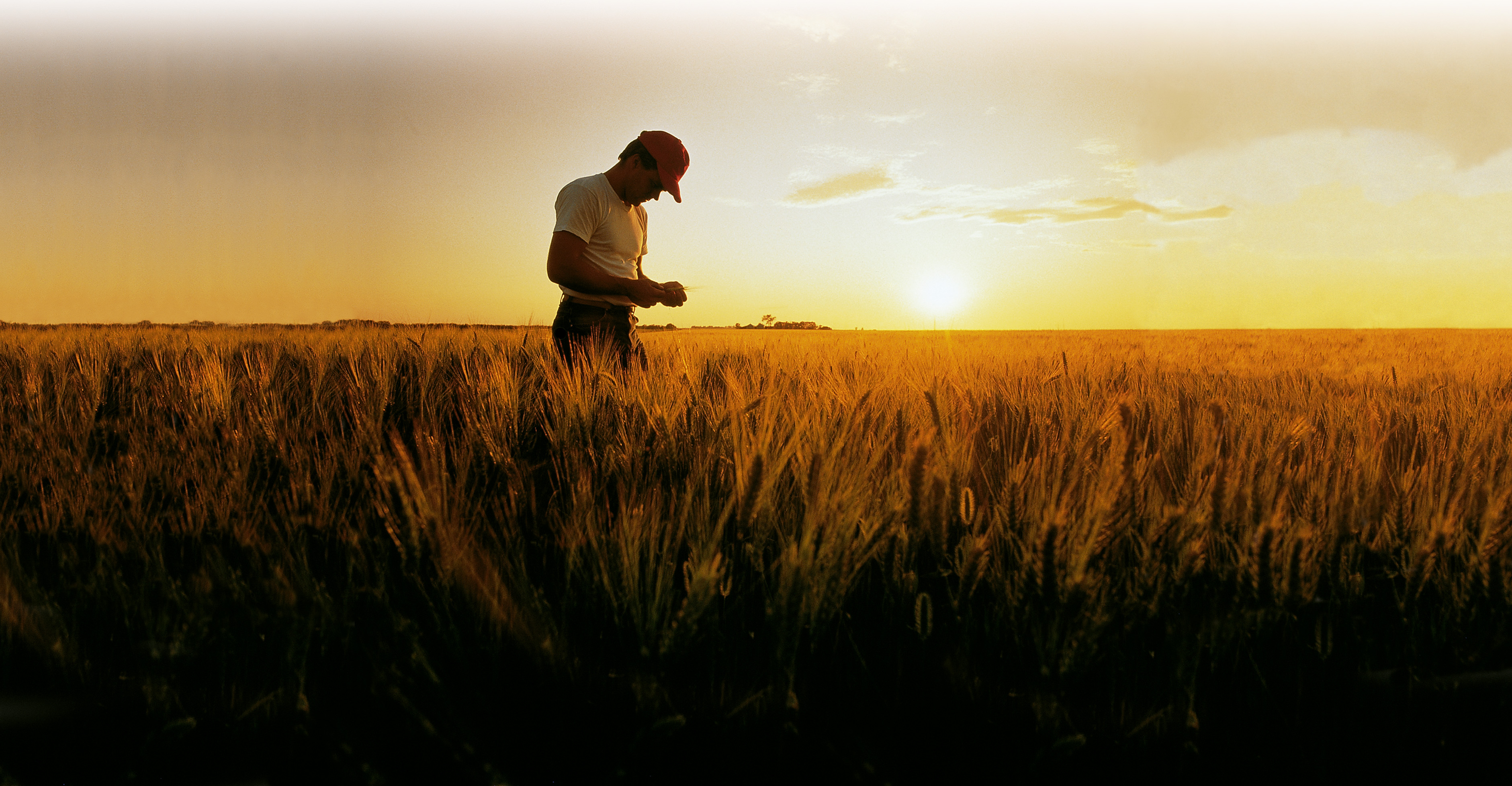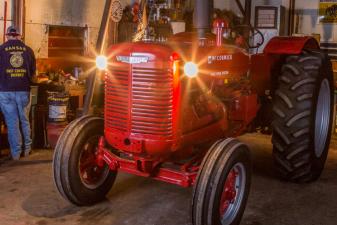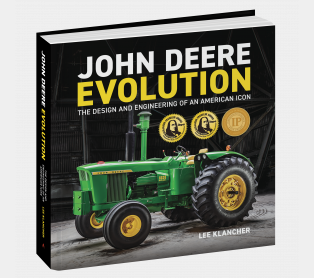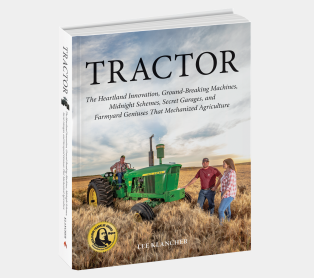The Glory of the Hunt

This article was originally published as a feature in the Ageless Iron section of Successful Farming magazine, where Lee Klancher is a regular contributor.
I’m a sucker for a good tractor story, whether the tale is a man hand-building tractors in a shed in his backyard at the turn of the century, or the young industrial designer whose first exposure to company executives came when he drove the tractor bearing his new creation over a Volkswagen Bug in the 1970s.
When I started working on my book, TRACTOR, I wanted to cover all the brands with a book that included some of those great stories as well as evocative images of the most important machines in tractor history (and, yes, both the stories above are included in detail).
Building a book is always a unique challenge, and one of the trickiest things about this one was making the cover. The cover had to appeal to a broad slice of enthusiasts and convey the great stories inside.
I envisioned a cover image of a family of real farmers in a work setting, which would illustrate the tractor’s role in history, as well as offer a tip of the hat to all the wonderful documentary images inside the book taken by Dorothea Lange, Ansel Adams, and many more well-known photographers.
I also wanted a setting sun in the background. The warm light of the fading sun evokes compassion and nostalgia with a touch of sadness, conveying the challenges faced by those who survived to farm into the modern era and the opportunities created by the tractor.
As I often do when conceiving complex images, I looked at images on the web and in my archives to fine-tune my vision. When I came across a shot taken in Australia in November 2016, the concept came together.
The photograph was of a Steiger ST470 and the tractor’s owner in mature wheat. The image was made on a flat, cloudy day with high-powered strobes pushing light in from camera right. The combination was magic—the strobes highlighted the weathered edges of the tractor, the denim and work lines of the farmer, and gave the wheat a velvety sheen.
I also loved the depth to the image provided by the wheat disappearing in the distance, and the backdrop created by the rise of the hill.
Those elements would all work for my cover for TRACTOR. I believed my vision for a setting sun would make the shot even more dramatic.
I had my concept. All that was needed was the perfect location, machine, and family.

Rolling fields in the light of sunset perfectly captures the farms of the American heartland. Photo courtesy by Case IH
The earliest mature wheat in the country was the first priority. I called friends, government agencies, and anyone else that might help. This led to about a dozen dead ends. Wheat was under water, fields were too flat, and deep southern Texas had no collectors within 250 miles!
I finally hit pay dirt when Kelly Kravig, a long-time tractor industry product specialist, suggested late May in Frederick, Oklahoma.
The cover tractor was next, and it had to be a special example of a critical model. With lots of advice, I settled on the John Deere 4020. This good-looking and popular machine represented a turning point for both tractors and for the industry.
After a few calls, I found Jack Purinton, who owned the first powershift 4020 built. The machine was a working example, which was perfect, and Jack was game to bring his rare machine to Frederick.
The last piece of the puzzle was the farm family. Jim Smith of the Great Plains Area - Vocational Technical School runs the ag mechanics program there and knew everyone in the area. Jim connected me to the family of Landon and Lindsay Hunt.
Landon’s grandfather had moved to the area, and the family farmed the same piece of ground ever since. Happily, they were open to standing in for a cover shot. Lindsay had also been a local television reporter, so she proved very helpful as she knew the image-making business.
I was set! All I had to do was load my gear into the truck and drive to Oklahoma.
I gave myself several days in the area to allow for weather, scout the location, and plan the shot. Driving in, I began to get worried. The wheat 100 miles around Frederick was not golden. The wheat harvest in the region was miserable. Many farmers had simply turned in their insurance and given it up.
I drove out to the Hunt farm, and Lindsay greeted me with an arm full of a newborn child and another one tearing around the yard at full boogie. She was not sure where good wheat or fields might be but gave me some broad directions.
The wheat in the area was so bad I gave up. I looked for a corn field that was decent and found one that was modestly passable for a morning shot. I drove another five miles down the road, looking for something good and finding nothing, when Lindsay called me.
“C’mon back,” she said. “My father-in-law, Chris, can help you.”
When I drove in the yard, Chris Hunt gave me a meaty handshake and boomed, “I’m here to show you Nirvana. Jump in the truck.”

Chris is pictured here with the tractor he uses to work his family farm. Photo by Lee Klancher
I did, and Chris slammed it in gear and off we went, across the pavement and bouncing off the road on a dusty path between the fields.
About two miles of bad road later, Chris topped a rise and explained that despite the bad harvest, he had about ten acres of good crop. He stopped at the rise, and I looked down on a corner of beautifully mature, stunningly golden wheat rising up to meet me. The high part of the field was in the west, meaning the sun would set and cast lovely long light on the hill.
Nirvana indeed. After months of work, I had found the perfect spot.
That night, the light was perfect, Lindsay and Landon’s family were a joy to photograph, Jack a game, hard-working man, and his 4020 was a beautiful working condition machine. After about four hours of work setting up strobes and letting the evening get perfect, I had my cover, and a good story to tell!

The cover shot for TRACTOR came about after a lot of hard work and location scouting. Photo by Lee Klancher
If you’d like to read TRACTOR, check out the “related books” linked below.







